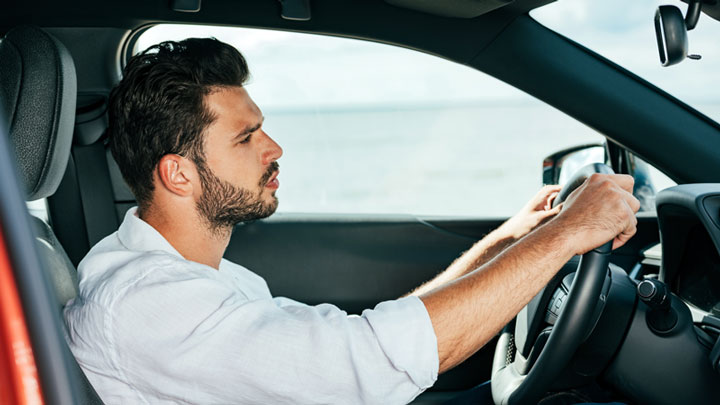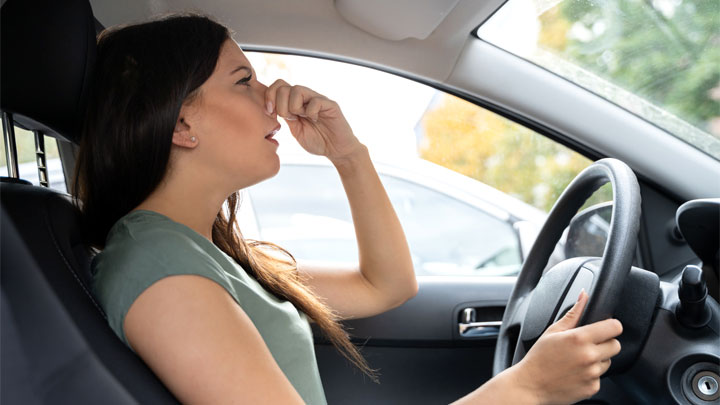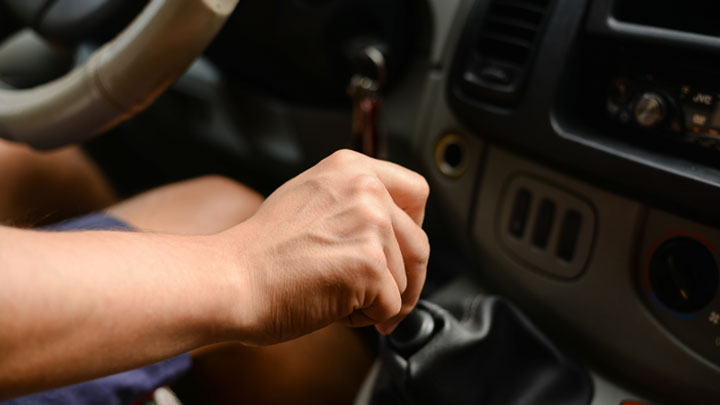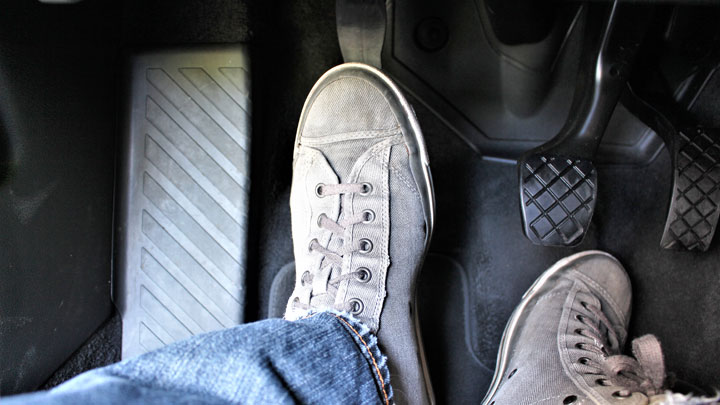6 Symptoms of a Slipping Clutch (They’ll Only Get Worse)
Though automatic transmissions continue to grow in popularity, many drivers still enjoy the art of shifting gears. Though quite reliable, clutches eventually wear and start slipping during acceleration.
Diagnosing clutch slippage early allows affordable repairs before extensive damage occurs. Read on to learn the symptoms of a slipping clutch, what it feels like, and how long you have before the clutch completely fails.

See Also: What Transmission Does My Car Have?
What is Clutch Slipping?
A vehicle’s clutch is “slipping” when its friction plates fail to properly engage the transmission’s flywheel. This, in turn, causes the clutch to free spool, rather than sitting firmly against the flywheel’s mating surface as intended.
To better understand this principle, one must first familiarize themselves with the role that a vehicle’s clutch plays in manual transmission operation. In essence, a clutch serves as the mechanical linkage between a vehicle’s engine and transmission.
When driving down the road, a vehicle’s clutch is pressed firmly against an engine mounted flywheel by a spring-loaded pressure plate. The clutch’s friction discs are lined with a specialized coating, which causes them to grip the flywheel’s surface.
When engaged in this manner, a vehicle’s clutch directs an engine’s power through the transmission itself.
Whenever a motorist depresses their vehicle’s clutch pedal, a release bearing releases all force applied by the above-mentioned pressure plate. The clutch itself then pulls away from the vehicle’s flywheel, thereby preventing power transfer to the transmission.
In the case of a slipping clutch, a vehicle’s clutch pack is no longer able to grip an engine’s flywheel as anticipated, thereby causing these friction discs to “slip” across the flywheel’s mating surface.
What Does a Slipping Clutch Feel Like?

A slipping clutch is most often felt like a general lack of acceleration, upon releasing a vehicle’s clutch pedal and depressing the throttle. In general, an engine’s RPMs will steadily increase, though the vehicle in question will fail to gain the amount of traction anticipated by its driver.
In many cases, a slipping clutch is often accompanied by the smell of burning friction material and intermittent spikes in engine load. In the most severe of cases, a vehicle will feel as if it is being held in place, or has a severe hesitation when accelerating.
Scenarios of this type are almost always more prevalent when an engine is cold, or when a car’s powertrain is under load.
Signs of Clutch Slipping
There are several different signs that can be used to identify a slipping clutch. Learning to recognize these signs can prove quite valuable, when attempting to avoid being stranded in place, in absence of a wrecker.
The following are several of the most common symptoms of a slipping clutch.
#1 – Irregular Noises

A slipping clutch is often accompanied by a host of unusual noises, most of which can be accurately described as rumbling or chatter. These noises arise from the clutch’s inability to firmly engage the flywheel’s mating surface.
#2 – Lack of Acceleration
When a clutch begins to slip, a motorist will often notice that their vehicle does not accelerate with as much authority as it once did. This is due to the fact that potential energy produced by a vehicle’s engine is lost as the clutch itself slips across the flywheel’s surface.
#3 – Burning Smell

A noticeable burning smell is often associated with clutch slippage, due to the fact that friction material is being continually ground across a flywheel’s mating surface with every second of engine operation. This smell is similar to that associated with burning brakes.
#4 – Intermittent Loss of Acceleration
Motorists might also notice that their vehicle hesitates under acceleration from time to time. This hesitation actually occurs when a vehicle’s worn clutch discs slip across a flywheel’s mating surface.
In the majority of cases, an engine’s RPMs will also spike as this occurs.
#5 – Issues Shifting Gears

Manual transmissions depend upon clutch disengagement to facilitate a clean, effortless shift cycle. If a vehicle’s clutch has begun to slip, its ability to be cleanly shifted might be negatively impacted.
Instead, a grinding and clashing of gears are often overheard.
#6 – Clutch Pedal Irregularities

The sudden onset of clutch pedal irregularities is another common sign of a slipping or otherwise damaged clutch. A condition of this type often causes a vehicle’s clutch pedal to feel spongy when depressed.
Alternatively, you might notice that your vehicle’s clutch pedal sticks, or vibrates intermittently.
Read Also: How to Adjust Your Clutch Pedal
What Causes Clutch Slipping?
A slipping clutch can be caused by a host of underlying conditions. However, the most prominent of these conditions centers around standard wear and tear. A vehicle’s clutch is not intended to last indefinitely, due to normal wear imparted by friction disc to flywheel contact.
The habit of riding the clutch is a surefire way to accelerate clutch wear and tear and increase your odds of a slipping clutch.
Other common causes of clutch failure include oil/grease contamination, clutch actuation-related issues, compromised release bearings, pressure plate problems, and excessive flywheel runout. In any event, the root cause of any clutch failure should be diagnosed and repaired before the clutch replacement can be completed.
Does a Slipping Clutch Use More Fuel?
A slipping clutch can, indeed, cause a vehicle’s engine to use more fuel. This is due to the fact that potential energy produced by a vehicle’s engine is not utilized in the most efficient manner possible.
Instead, a substantial amount of this energy is expelled as the clutch “slips”, rather than being directed to the corresponding drive wheels. This, in turn, can lead to (more) pain at the pump.
How Long Will a Clutch Last After It Starts Slipping?

There is little way to determine how long a clutch will last after it begins to slip. There are a number of variables associated with making such a determination, none of which are an exact science.
However, it is safe to say that failure is imminent, once a clutch begins to slip. This can take place over a matter of days, weeks, or months.
In any event, proper repair should be made to your vehicle’s clutch as soon as possible, following the confirmation of slipping. This is due to the fact that the issue at hand will only worsen with time, eventually leaving you stranded along the side of the road. This is not only a major inconvenience but a safety hazard as well.
Can You Fix a Slipping Clutch?
In the vast majority of cases, the only true way to repair a vehicle’s clutch after it has begun to slip is through replacement. Repairs of this type involve removing a vehicle’s transmission and assorted hardware, before removing and replacing the clutch itself.
A job of this nature is rather involved and requires the use of specialized equipment in almost every case. Unless you’re a seasoned home mechanic, it’s usually best to leave clutch replacement to the professionals.
It is also important to address any potential causes of premature clutch failure. This includes oil/grease contamination, and flywheel distortion. If such conditions are not remedied before installing a new clutch, you will be doomed to repeat the same repairs in relatively short order.
- P0480 Code (Symptoms, Causes, and How to Fix) - Apr 19, 2024
- Car Temperature Gauge Stopped Working? (Here’s Why) - Apr 15, 2024
- Ignition Coil vs Coil Pack (What’s the Difference?) - Apr 8, 2024
